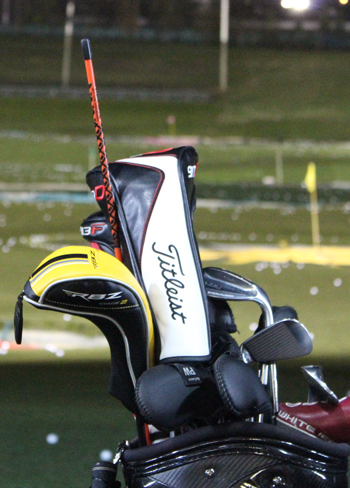2019 USGA Rule Changes

United States Golf Association Logo, image: mediacenter.usga.org
The formal game of golf began with just 13 written rules. That sufficed for hundreds of years but today’s game has evolved far beyond that. This year alone there were more USGA 2019 rule changes than there were original rules. The rules changes were enacted to foster improvements in the playing of the game. Let’s take a look at how things have been going rules-wise in 2019.
Pace of Play
Slow play is golf’s biggest bugaboo, blamed for everything from lack of growth in the game to fostering unfair competition. So it was no surprise when there were four rule changes aiming to increase the pace of play.
1. Leaving the Flagstick in the Hole
The most noticeable new rule in 2019, both for professionals on Tour and player at the local muni, was the elimination of the penalty stroke for “Ball Played From Green Hitting Unattended Flagstick in the Hole.” That word salad translates to “leaving the flagstick in the hole while putting.”
The primary purpose of the new rule was to speed up play on the greens by eliminating the need for players to tend the pin for one another. Immediately there were studies published on whether it was an advantage to leave the pin in for all putts. While the final analysis is inconclusive, folks are leaning towards “maybe a little.”
On the PGA Tour, most players have adopted the strategy of leaving the flagstick in for longish putts and pulling it out on shorter efforts. A few players, most notably former Masters champion Adam Scott, have elected to leave the flag in on all putts, long and short. So far he remains the exception as most players favor the familiar target of an empty hole.
2. Time Before Golf Ball is Declared Lost
Another pace-of-play rule change instituted by the USGA involved reducing the “Time to Search Before Ball is Declared Lost” from five minutes to three minutes. With marshalls lining every fairway in professional golf, this rule has had little impact on the elite level. And for amateur players, time to search for balls is predominantly based on personal factors and not any stated rule.
3. Local Rule Alternative to Stroke and Distance
One of the most important changes to the pace of play was not codified by USGA rule, but provided for a new “Local Rule Alternative to Stroke and Distance.” This states that rather than walk-back and replay a shot that flies out-of-bounds, clubs can offer players the choice to drop with a two-stroke penalty in a large area close to where the original ball disappeared.
4. Local Rule Alternative to Stroke and Distance
The most important rule affecting slow play is already in the books but is rarely enforced. Players are supposed to execute a shot within 40 seconds of arriving at their golf ball. The new rules attempt to reinforce the concept by “Encouraging Prompt Pace of Play” by employing “ready golf” where the tradition of waiting for the player furthest from the hole to hit is abandoned.
Making the Game More Fair
Golf traditionalists abide by the most basic of all rules – play the ball as you find it. But for many golfers such concepts, for example, “rub of the green”, are antiquated.
This concept is reflected in the 2019 rule changes. Now, players are allowed to repair small imperfections on the green from spike marks, dragged clubs, animal damage, and more. The fear was that such housekeeping on the green by players would slow down the game, but that has not been the case so far.
Prior to 2019, few things would irk a golfer more than the inability to remove pine cones, pebbles, twigs and the like that would interfere with a bunker shot. Talk about adding insult to injury. Now it is permissible to “Move or Touch Loose Impediment or Touch Sand in a Bunker”.
While this indeed helps make for a more equitable game, it has not removed every grain of controversy in a sand trap. As World Number Two Rory McIlroy discovered during a tournament when he went to remove what he thought was a stone (legal) and discovered it was a clump of sand (illegal), there was a momentary fear he would be assessed a penalty. McIlroy claimed he touched the sand unintentionally, and there was no consequence.
Making the Game More Appealing
A constant concern for the powers that be at the USGA is that the game appears stodgy and unappealing to non-golfers. Several new rules addressed situations where penalties were assessed even though the infraction was of no benefit to the player. Some of these include “No Penalty for Accidentally Moving Ball on the Putting Green,” “No Penalty for Accidentally Moving Your Ball During a Search,” and “No Penalty If Ball Is Impacted In Motion By You, Your Equipment or Your Caddy.” All make the rule book seem less fussy.
Two new rules that do make the game seem too entwined in minutia seem to be the biggest candidates for repeal. The first, the one that received the biggest howl from Tour professionals, was the “New Procedure for Dropping a Ball” – instead of dropping the ball from shoulder height with an outstretched arm the ball must now be let go from knee height.
The Twitter storm mocking that change has receded through the year but this rule seems destined to a future of a drop from any height being legal as there is no inherent advantage in any procedure.
The second rule that appears in imminent danger is also due to outrage from professionals. During the 2019 season, two-stroke penalties were given professionals for “Caddie Standing Behind A Player To Help Line the Player Up.” The main complaint from the players is that such a situation does not provide any inherent advantage and the penalty is subjective. If there is anything the USGA Rules of Golf does not need it is diminished clarity in the rules.
2019 USGA Rule Changes: Wrap Up
At the end of the day, the 2019 USGA rule changes were implemented to increase the pace of play and make the game fairer. While some of the rule changes still receive push back from players, the overall changes have helped overall gameplay.


